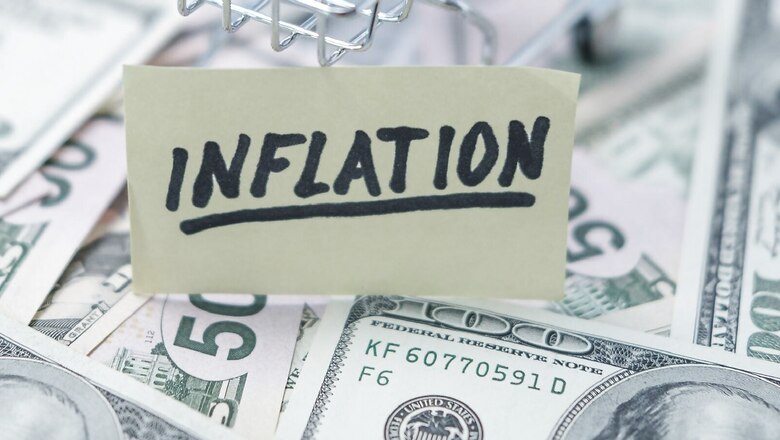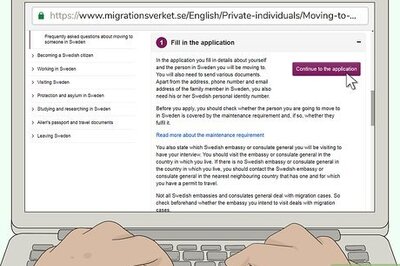
views
As inflation in the US has soared to a 41-year high of 9.1 per cent in June due to global supply chain disruptions and fiscal stimulus from governments early in the coronavirus pandemic, analysts in India said it might prompt the US Federal Reserve to hike interest rates more aggressively, which will, in turn, lead to more foreign capital outflows from India, thus further impacting the rupee and equities markets here.
Consumer prices in the US during June jumped 9.1 per cent year-on-year on account of high prices for gas, food and rent. This is the biggest 12-month increase since 1981, and up from an 8.6 per cent jump in May. On a monthly basis, prices rose 1.3 per cent from May to June, another substantial increase, after prices had jumped 1 per cent from April to May.
Vivek Iyer, partner and leader (financial services risk) at Grant Thornton Bharat, said, “Given the global status of the dollar as a reserve currency, every macroeconomic indicator of the US means something for the rest of the world and India is no exception. High US inflation means a tight Fed policy resulting into high interest rates there, thereby depreciating currency for India.”
He added that the depreciating currency for India generates two policy responses — market intervention through dollar sales to manage currency volatility; and management of domestic liquidity and domestic interest rates to control inflation on account of imports.
The Indian rupee on Thursday touched a record low for the fourth straight session. The local currency opened trading at a lifetime low of 79.71 (provisional) per US dollar compared with its previous close of 79.63.
Sudarshan Motwani, founder and CEO of BookMyForex.com, said, “High inflation in the US would mean that the US Federal Reserve would increase its key interest rates that would, in turn, result in FPIs (foreign portfolio investors) pulling funds from Indian equities putting pressure on the rupee. Also, speculators may be taking advantage of the current situation where the RBI seems to be waiting for dollar inflows on the account of its recent policy changes and hence possibly not intervening for some time.”
Motwani added that currently, the lack of corporate dollar inflows is putting the main pressure on rupees. “Good possibility of the rupee reversing its current fall before the end of this month as that timeframe is likely to see larger corporate dollar inflows.”
Foreign investors have been pulling out money from the Indian markets since October 2021. They have pulled out over Rs 4,000 crore this month so far amid steady appreciation of the dollar and rising interest rates in the US. FPIs’ net outflow from equities has reached around Rs 2.21 lakh crore so far this year — an all-time high. Before this, they withdrew a net Rs 52,987 crore in the entire 2008, data showed.
Prashanth Tapse, vice-president (research) of Mehta Equities, said, “The US CPI inflation numbers, which jumped to a 41-year high of 9.1 per cent in June certainly raises the prospects of a more hawkish stance by the US Fed in its next policy meet, which could further fuel volatility in equities and other asset classes.”
He added that with the FPI outflows showing no signs of a pullback, one could expect volatility in the currency markets also.
Last month, the US Fed announced the most aggressive interest rate increase in nearly 30 years, raising the benchmark borrowing rate by 75 basis points as it battles against surging inflation. It will meet for the upcoming policy review later this month. The US central bank has a target to keep the inflation rate within 2 per cent.
Anindya Banerjee, vice-president (currency derivatives and interest rate derivatives) of Kotak Securities, said the US rate hike after the latest inflation data can curtail FPI flows further and corporate dollar raising plans, which means there can be a lower supply of the dollar and greater likelihood of rupee depreciation.
“With the US inflation at a 41-year high, odds of the Fed hiking back to back by 100 bps (basis points) in July and September have increased. At the same time, US yield curve has inverted with the negative spread between US 10-year and US 2-year now, the widest since 2000,” Banerjee added.
Banerjee also said the cocktail of aggressive rate hikes and risk of recession are double negatives for the world economy, including the Indian economy. “As far as the economy goes, sectors that are linked to exporters can face the heat as the global economy slows. At the same time, sectors that are linked with the commodity cycle can also see their earnings dip if commodity prices fall sharply due to Fed and recession risk.”
Prasenjit Basu, chief economist of ICICI Securities, said, “The US will be obliged to rapidly reverse its huge monetary policy error of the past 12 months. We continue to expect the US Fed funds rate to reach 3 per cent by the mid-September FOMC meeting. A US recession is a certainty by early 2024.”
Read all the Latest News, Breaking News, watch Top Videos and Live TV here.




















Comments
0 comment